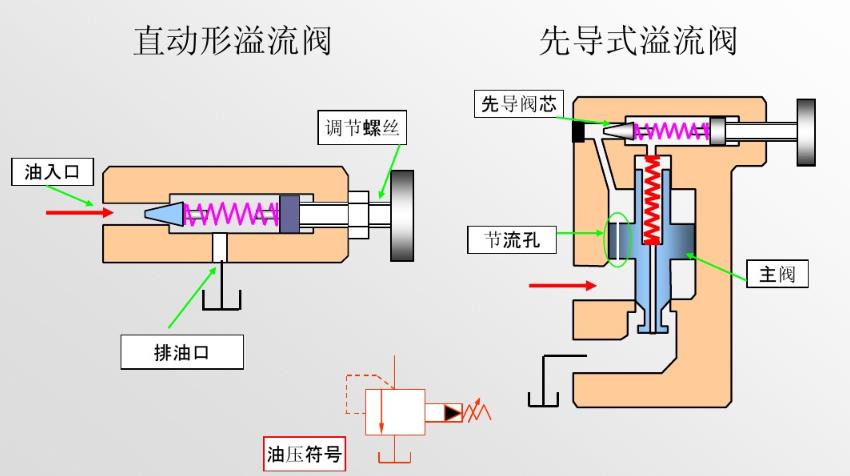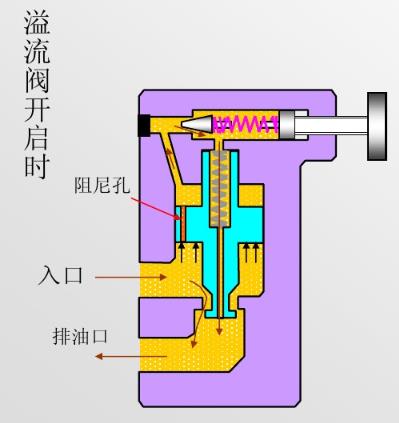1. Constant pressure overflow function: In the metering pump throttling adjustment system, the metering pump provides a constant flow rate. As system pressure increases, flow demand decreases. At this time, the safety valve opens, allowing excess flow to flow back into the tank to ensure that the inlet pressure of the safety valve, that is, the outlet pressure of the pump is constant (the valve port often opens with pressure fluctuations).
2. Voltage stabilization: The relief valve is connected in series on the oil return line. The relief valve generates back pressure and increases the stability of the moving parts.
3. System unloading function: The remote control port of the relief valve is connected in series with a solenoid valve that overflows a small flow rate. When the solenoid is energized, the remote control port of the safety valve is connected to the fuel tank. Connected, the hydraulic pump is unloaded at this time. At this time the safety valve acts as a safety valve.
4. Safety protection function: When the system is working normally, the valve is closed. Only when the load exceeds the specified limit (the system pressure exceeds the set pressure), the relief valve will open and perform overload protection to prevent the system pressure from rising (usually the set pressure of the safety valve is 10% higher than the maximum working pressure) -20 system pressure).
Working principle of the relief valve
As shown below:

1. Oil enters the lower chamber of the main valve piston from the inlet, generating an upward force on the piston;
2. The oil enters the upper chamber of the piston through the damping hole and exerts a downward force on the piston. Before the pilot spool is opened, the upper and lower areas of the piston are the same and the pressures are equal. Therefore, the force on the piston is balanced. In addition, the main spool spring exerts a downward force on the piston, so the main valve is closed.
As shown below:

1. The inlet pressure of the relief valve continues to increase. When the oil pressure is greater than the pressure set by the pilot spool, the pilot spool opens. The pressure oil in the upper chamber of the main valve is drained away through the pilot valve, and the pressure in the upper chamber becomes 0.
2. Since the pressure in the upper chamber is 0, under the action of the oil pressure in the lower chamber, the main valve moves upward, opens the valve core, and the inlet pressure oil flows into the oil drain port through the main valve core , reduce the inlet oil pressure.
3. When the inlet oil pressure drops below the pressure set by the pilot valve, the pilot spool closes and the pressure is re-established in the upper chamber of the main valve, pushing the main spool. Move down to close the main valve.






 WhatsApp: +8615857777578
WhatsApp: +8615857777578